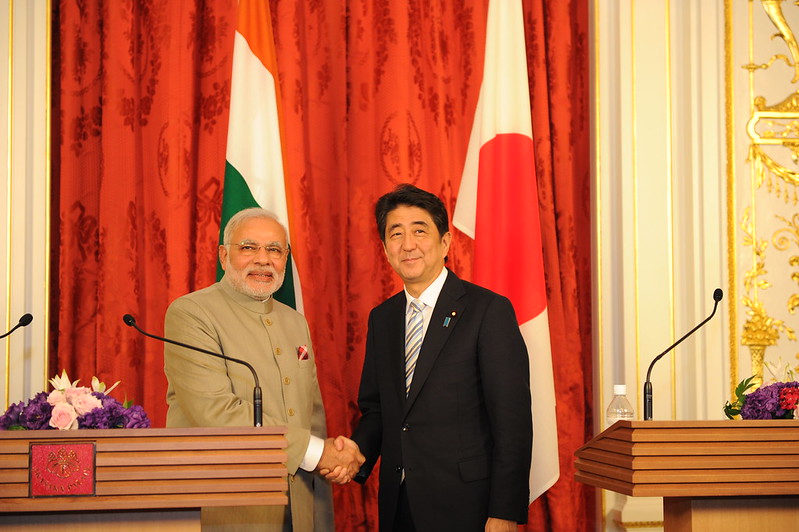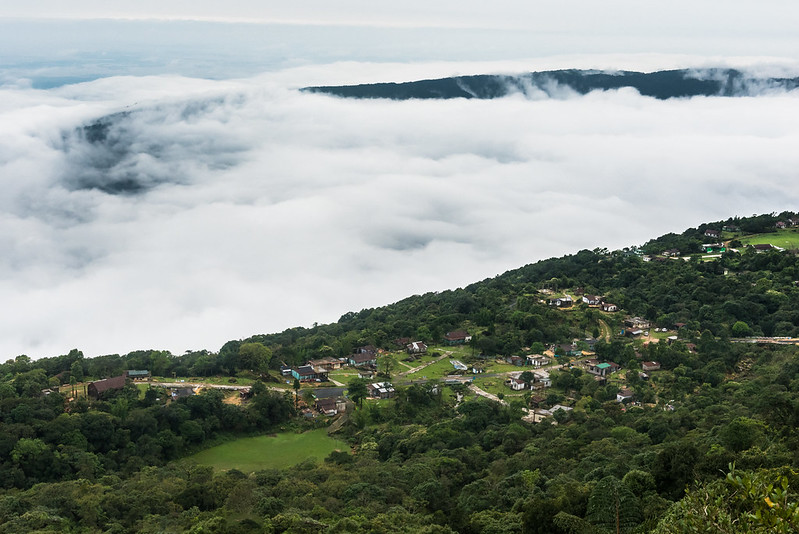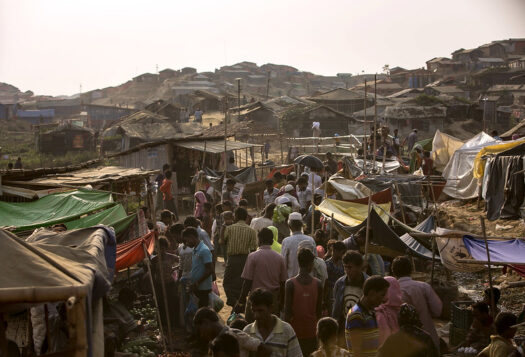
India’s great friend and former Prime Minister of Japan, Shinzo Abe, envisaged a “Broader Asia” composed of the Indian and the Pacific Oceans. As a part of this vision, Japan is the fifth-largest investor and source of Foreign Direct Investment (FDI) in India, with Japanese businesses making significant investments and looking to invest about USD $42 billion by 2027. India is also the highest recipient of Japanese Official Development Assistance (ODA) loans over the past decade.
In recent years, the Quad grouping has given a new dimension to the India-Japan partnership by fostering economic cooperation, but more needs to be done. To realize Abe’s vision and harness the full potential of this region, it is imperative to knit countries and regions together at the state-to-state level. As both Japan and India hope to enhance their political, economic, and cultural relationship, the state governments of India should take advantage of this momentum and enhance their trade and investment with their Japanese counterparts.
This phenomenon, labeled paradiplomacy by John Kincaid in 1990, refers to when non-central governments participate in international cooperation. With regards to Japan and India, if cultivated, these will have snowball effects on the stability and prosperity of the Indo-Pacific region. For Indo-Japanese paradiplomacy to be truly successful, future infrastructure projects ought to consider coordinated national and sub-national initiatives.
To realize Abe’s vision and harness the full potential of this region, it is imperative to knit countries and regions together at the state-to-state level.
Rise of Indo-Japanese Paradiplomacy
Paradiplomacy has become increasingly common over the past decades, with globalization being a key factor in India’s use of the practice. The economic reforms of 1991, the increasing importance of states in the country’s economic growth, and the growing competition between states in recent years have been key factors in paradiplomacy’s rise as a pillar of India’s foreign policy. Over time, Indian states have played an important role in strengthening ties with countries such as Japan, the United States, Singapore, and recently the United Arab Emirates.
Economic diplomacy and development assistance are the primary building blocks of India and Japan’s relationship. A new dawn emerged for Indo-Japanese bilateral cooperation in 1999 when Japan funded a 1980 MW capacity thermal power plant in Jharkhand to alleviate India’s power shortages. Since then, Japan has funded or otherwise supported multiple infrastructure projects in India, such as the Delhi metro project.
Evolving out of this existing partnership is an emerging trend of paradiplomatic agreements. Japanese sub-national governments, non-governmental organizations, and companies have since laid out plans for investment through agreements made directly with Indian state governments, emphasizing cooperation over infrastructure, research, agriculture, education, and more. In November 2016, India and Japan signed a sister-state relationship through a Memorandum of Understanding (MoU) for Gujarat and Hyogo prefecture. During his visit to Japan in 2018, Bihar Chief Minister Nitish Kumar and Nara’s then-Prefectural Governor Shogo Arai proposed a sister city agreement between Nara prefecture and Bodhgaya in Bihar. In 2019, during Prime Minister Narendra Modi’s visit to Japan, he signed an MoU to promote a sister city partnership between Kobe in Hyogo and Ahmedabad in Gujarat.

Most of Japan’s developmental assistance is executed through the Japan International Cooperation Agency (JICA), which not only collaborates with the central government but also with state authorities, further buttressing this all-weather bilateral partnership. The industries that already receive maximum investment from Japan are automobiles, metallurgy, pharmaceuticals, and medical appliances. However, JICA projects include more development and infrastructure work and are spread across the length and breadth of India, with a special emphasis on the Northeastern region of India. JICA is currently coordinating with the government of Assam to commission the Guwahati Water Supply Project, which aims to enhance clean drinking water access in the city. Other projects include the Northeast India Network Connectivity Improvement Project (Assam-Meghalaya) and the Project for Renovation and Modernization of Umiam-Umtru Stage III Hydroelectric Power station (Meghalaya), which were initiated to build better connectivity in the region to spur development and job creation. The emphasis on India’s Northeast is primarily due to the relevance of the region as a key juncture where the Free and Open Indo-Pacific vision of Japan (FOIP), Japan’s framework for its approach to Indo-Pacific connectivity and prosperity, meets India’s Act East vision, a diplomatic initiative to promote economic, strategic and cultural relations with countries in eastern Asia.
JICA projects also supply India’s manufacturing sector with technical and academic exchanges with Japanese experts. These sub-national relationships have the potential to lead to joint ventures, co-developed projects, people-to-people connections, and further promote cultural tourism. Joint production through projects such as JICA’s Knowledge Co-Creation (KCC) Programs and Visionary Leaders for Manufacturing (VLFM) promise to foster leaders with skills and a mindset to contribute to local industries. By coordinating with JICA on additional projects, India’s states can address the scarcity of job opportunities throughout India and invest in infrastructure and technical skill development in less developed areas.
Paradiplomacy’s Role in Enhancing Indo-Pacific Cooperation
With India’s policy transition from “Look East” to “Act East,” and with the growing importance of India’s Northeastern region due to its proximity to the Pacific, Indian states can play a significant role in facilitating India’s connectivity with Southeast Asia, South Asia and the broader Indo-Pacific region. State-to-state economic diplomacy plays a vital role not only in growing economic and people-to-people linkages, but also in enhancing the strategic relationships between Indo-Pacific states.
The Northeast is an important gateway to the Indo-Pacific region for India and, therefore, ought to be the focus of paradiplomacy efforts. India and Japan have prioritized the “Bay of Bengal Northeast Corridor” project, which aims to further strengthen cooperation and connectivity between India and Southeast Asia. The recent collaboration between India and Japan to develop the Matarbari Deep Sea Port in Bangladesh is one such example of how both countries are cooperating to build infrastructure and industrial value chains at a national level.
The Northeast is an important gateway to the Indo-Pacific region for India and, therefore, ought to be the focus of paradiplomacy efforts.
Future infrastructure projects funded through paradiplomacy ought to consider coordinating state-to-state diplomacy with national-level agreements, such as the Bay of Bengal Northeast Corridor, capitalizing off of existing momentum to address local-level issues within the framework of a national-level agenda. Sub-national governments on the Bay of Bengal can leverage such nationally-led initiatives to fund local infrastructure and development through their sub-national counterparts in Japan and the rest of the region. In addition to providing critical infrastructure, such projects are strategically important to the FOIP framework as a focal point of connectivity between South and Southeast Asia. For India’s paradiplomacy in the Bay of Bengal to be truly successful, state governments must heavily involve non-governmental stakeholders – especially business, academia, and civil society organizations – to monitor progress and innovate means to further deepen these cooperative relationships.
Chelikani Dharma and Abhishek Dey contributed to this paper. Both are enrolled in the Master’s in Diplomacy, Law and Business Program at the Jindal School of International Affairs, OP Jindal Global University.
Also Read: Indian Foreign Policy in an Election Year
***
Image 1: PM Modi with Former PM Shinzo Abe via Flickr
Image 2: Meghalaya via Flickr


